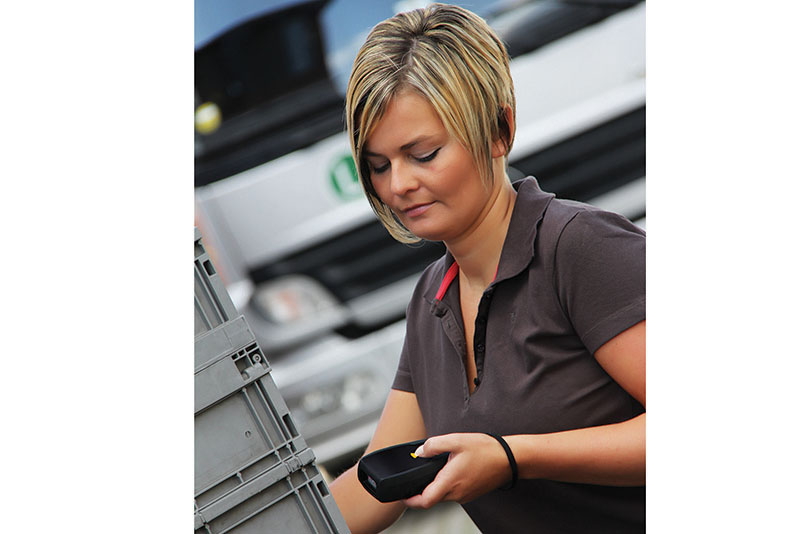RFID takes on automotive containers
Offering an ROI of just six months, RFID is on a trajectory to change how automotive tracks, traces, identifies and recycles packaging across its supply chain.

Over the years, the phrase “déjà vu all over again” keeps coming up. Yogi Berra originated it, and years later John Fogerty used it for an album title. Later on, NCIS adopted it for an episode title. Now déjà vu all over again can have its chance to be associated withRFID.
You remember RFID. The identification and tracking chip technology that has been in line to save the materials handling world since at least the 1970s. Some of its earliest applications were on automotive assembly lines. And now, RFID is making a comeback. This time to automotive bins and containers.
We had a chance to talk about this with安迪·舒马赫, vice president of the packaging division atSSI Schaefer.射频识别跟踪所有的活有一些真正的优点sable bins and containers needed to transport parts between suppliers and auto assembly lines and back again. Not only can the technology track containers, but it can be used to identify what’s inside them. In a supply chain world that is coming to prize transparency, the latter is a huge plus.
Schumacher estimates that labels embedded with RFID tags are on 15% of all those containers today. Some auto suppliers are further ahead than others with Toyota and Mercedes going 100% to RFID tagged containers last year. Schumacher expects RFID to be on at least half of all automotive containers in three years.
That’s ambitious. The last time such a large scale move to RFID labels was when Walmart tried it in 2003. As you may recall, that effort failed. However, there’s been quite a bit of data under the RFID bridge since then.
And as you might expect, all over again RFID is a bit of an underachiever here. “The technology is being used primarily to track and trace just the packaging not the parts, too. And that’s much less than it can deliver,” says Schumacher.
Fortunately, he expects this to be a transitional time for RFID in the container supply chain rather than an artificial ceiling. You see, it’s one step to embed a 20-cent RFID tag in a container label. It’s a much bigger step to integrate software for all RFID capabilities in legacy automotive IT systems. But that’s not going to be the case for long, says Schumacher. It will come stepwise as automakers cycle through their model changeovers.
He expects that migration to build out during the next three years, opening the door for rapid adoption after that. As part of this, auto companies need to identify locations for RFID portals and install them. When they get it right, payback is about six months.
That’s quick for a reason. On the input side, the ROI includes tags, labels, hardware and software. But, there’s more. Use of RFID will expedite container movement, reducing the number that need to be in the supply chain in the first place. In addition, RFID is a powerful tracking system that will reduce the number of containers that just wind up lost in the supply chain. And, don’t forget about improved parts visibility all along the supply chain.
RFID déjà vu all over again. Sounds like a supply chain hit in short order.

Article Topics
Latest in Logistics
April truck tonnage falls for the second straight month, reports ATA CAGTC membership makes the case for the need for IIJA-driven grant funding National diesel average falls, for week of May 22, reports EIA Security For Warehouse and Distribution Centers Market conditions push down FTR’s Trucking Conditions Index ISM survey indicates people remain a stumbling block to procurement success Flexport announces key executive hire to run its new truckload brokerage unit More LogisticsSubscribe to Logistics Management Magazine

Find out what the world's most innovative companies are doing to improve productivity in their plants and distribution centers.
Start your FREE subscription today.
May 2023
万博2.0app下载

Latest Resources














